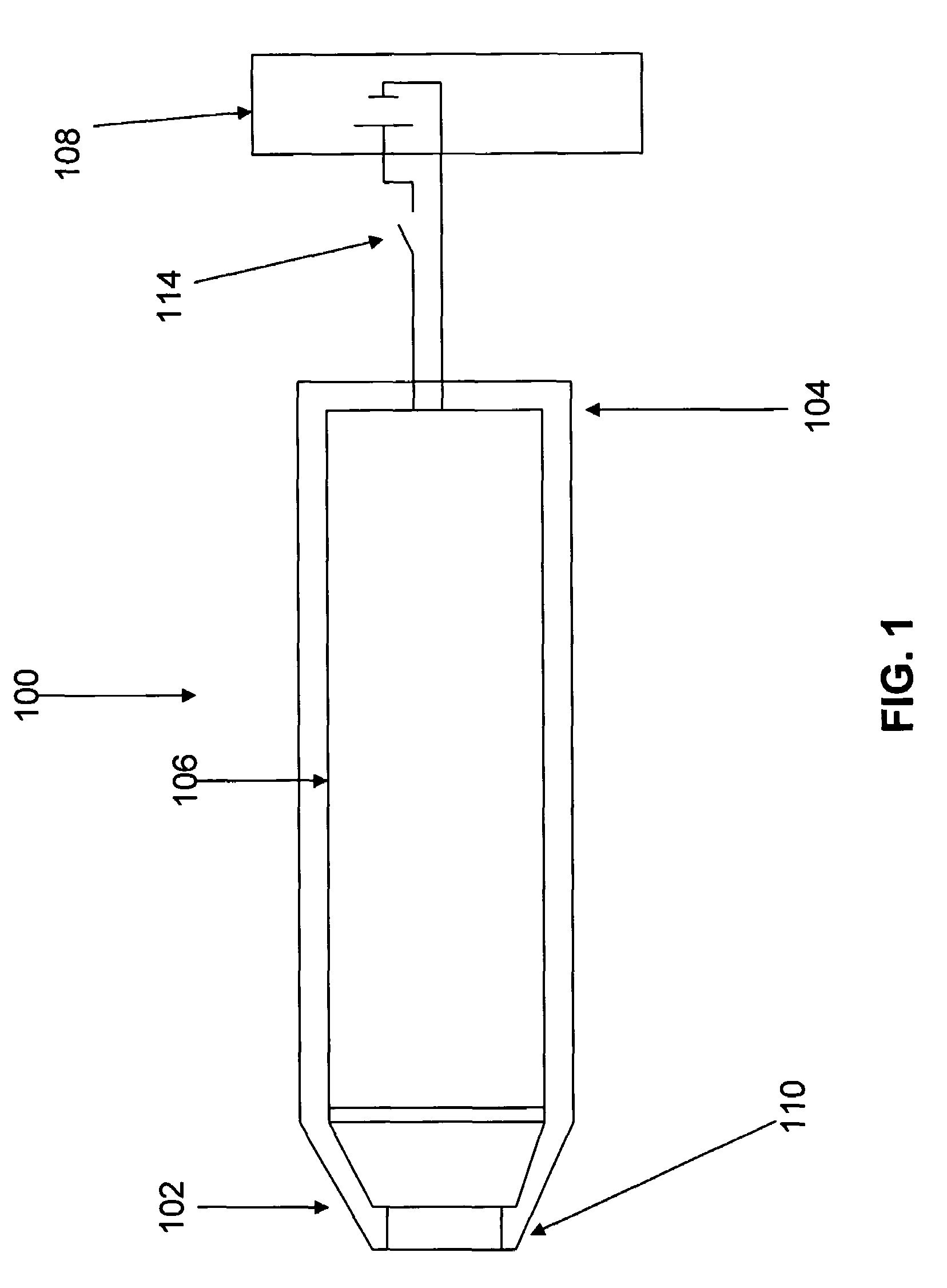Delivery of drug esters through an inhalation route
a technology of drug esters and inhalation routes, which is applied in the direction of exothermal chemical reactions for heating, powder delivery, and aerosol delivery, etc., can solve the problems of poor solubility, inadequate transcellular transport, and functional prevent the effective delivery of drugs
- Summary
- Abstract
- Description
- Claims
- Application Information
AI Technical Summary
Problems solved by technology
Method used
Image
Examples
example 1
General Procedures for Esterifying a Drug Acid
[0130]Drug acid (10 mmol) is dissolved in 90 mL of dichloromethane. To the solution is added 1 drop of dimethylformamide and 13 mmol of oxalyl chloride. The resulting mixture is allowed to stir 30 min. The mixture is concentrated to dryness on a rotary evaporator to provide a residue, to which 50 mL of an alcohol (e.g., methanol) is added. The alcoholic solution is concentrated to dryness to afford the desired drug ester.
[0131]Drug acid (6 mmol) is dissolved in 60 mL of dichloromethane. To the solution is added 1 drop of dimethylformamide and 9 mmol of oxalyl chloride. The resulting mixture is allowed to stir 1 h. The mixture is concentrated to dryness on a rotary evaporator to provide a residue, to which 47 mmol of an alcohol (e.g., HOCH2CH2N(CH3)2) in 20 mL dichloromethane is added. The reaction mixture is diluted with 60 mL dichloromethane and subjected to a series of washings: 50 mL saturated aqueous NaCl followed by 50 mL saturated ...
example 2
General Procedure for Esterifying a Drug Alcohol
[0132]Drug alcohol (5 mmol) is dissolved in 50 mL of dichloromethane. To the solution is added 5.5 mmol Hünig's base and 10 mmol acetyl chloride. The reaction mixture is allowed to stir at room temperature for 1 hour. The mixture is washed with 50 mL saturated aqueous NaHCO3 followed by 50 mL saturated aqueous NaCl. The dichloromethane extract is dried over Na2SO4, filtered, and concentrated on a rotary evaporator to provide the desired drug ester.
example 3
Procedure for Diesterifying Apomorphine
[0133]Apomorphine.HCl.½H2O (300 mg) was suspended in 600 μL of acetic acid. The suspension was heated to 100° C. and then cooled to 50° C. Acetyl chloride (1 mL) was added to the suspension, which was heated at 40° C. for 3 h. The reaction mixture was allowed to cool to room temperature. Dichloromethane (1–2 mL) was added and the mixture was allowed to stir overnight. The reaction mixture was diluted with dichloromethane, and the solvent was removed on a rotary evaporator. Toluene (10 mL) was added to the residue and subsequently removed on a rotary evaporator. The toluene addition / removal was repeated. The resulting solid residue was triturated with ether, providing 430 mg of a solid (mp 158–160° C.).
[0134]A portion of the solid (230 mg) was suspended in 50 mL of dichloromethane. The suspension was washed with saturated aqueous NaHCO3. The dichloromethane layer was dried over Na2SO4, filtered and concentrated on a rotary evaporator to provide ...
PUM
| Property | Measurement | Unit |
|---|---|---|
| mass | aaaaa | aaaaa |
| mass | aaaaa | aaaaa |
| mass | aaaaa | aaaaa |
Abstract
Description
Claims
Application Information
 Login to View More
Login to View More - R&D
- Intellectual Property
- Life Sciences
- Materials
- Tech Scout
- Unparalleled Data Quality
- Higher Quality Content
- 60% Fewer Hallucinations
Browse by: Latest US Patents, China's latest patents, Technical Efficacy Thesaurus, Application Domain, Technology Topic, Popular Technical Reports.
© 2025 PatSnap. All rights reserved.Legal|Privacy policy|Modern Slavery Act Transparency Statement|Sitemap|About US| Contact US: help@patsnap.com

